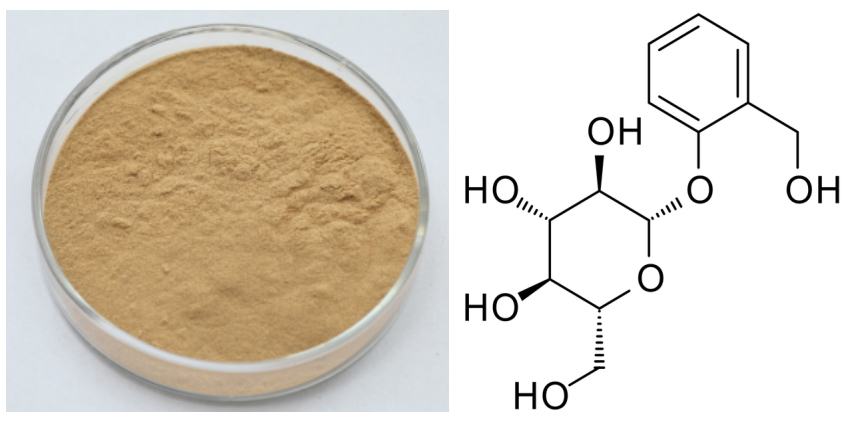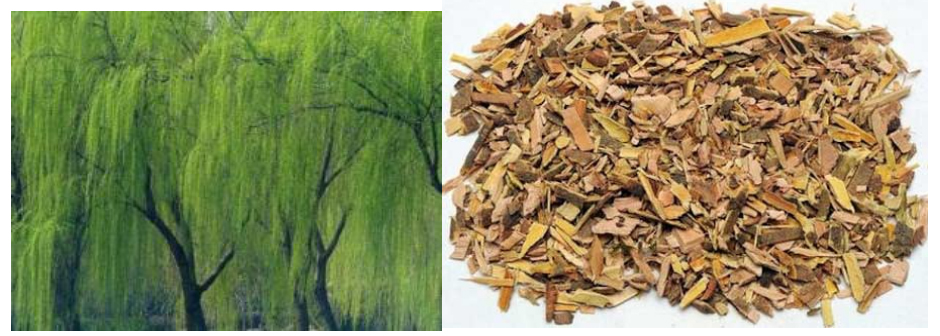Super Purchasing for White Willow Bark Extract Factory in Calcutta
Super Purchasing for White Willow Bark Extract Factory in Calcutta Detail:
[Latin Name] Salix alba L.
[Plant Source] from China
[Specifications] Salicin 15-98%
[Appearance] Yellow Brown to White powder
Plant Part Used: Bark
[Particle size] 80 Mesh
[Loss on drying] ≤5.0%
[Heavy Metal] ≤10PPM
[Storage] Store in cool & dry area, keep away from the direct light and heat.
[Shelf life] 24 Months
[Package] Packed in paper-drums and two plastic-bags inside.
[Net weight] 25kgs/drum
Brief Introduction
Salicin is a naturally occurring compound found in the bark of several species of trees, primarily North American in origin, that are from the willow, poplar, and aspen families. White willow, from whose Latin name, Salix alba, the term salicin is derived, is the most well known source of this compound, but it is found in a number of other trees, shrubs, and herbaceous plants as well being synthesized commercially. It is a member of the glucoside family of chemicals and is used as an analgesic and antipyretic. Salicin is used as a precursor for the synthesis of salicylic acid and acetylsalicylic acid, commonly known as aspirin.
A colorless, crystalline solid in its pure form, salicin has the chemical formula C13H18O7. Part of its chemical structure is equivalent to the sugar glucose, meaning it is classified as a glucoside. It is soluble, but not strongly so, in water and alcolhol. Salicin has a bitter taste and is a natural analgesic and antipyretic, or fever reducer. In large quantities, it can be toxic, and overdoses may lead to liver and kidney damage. In its raw form, it may be mildly irritating to skin, respiratory organs, and eyes.
Function
1. Salicin is used to ease pain and reduce inflammation.
2. Relieve acute and chronic pain, including headache, back and neck pain, muscle aches, and menstrual cramps; Control arthritis discomforts.
3. Relieve acute and chronic pain.
4. It has the same effect on the body as aspirin without any of the side effects.
5. It is an anti-inflammatory, a fever reducer, an analgesic, an anti-rheumatic, and an astringent. Specifically, it helps to relieve headaches.
Application
1.Anti-inflammatory, anti-rheumatic,
2.Reduce a fever,
3.Use as an analgesic and astringent,
4.Relieve headache,
5.Ease pain caused by rheumatism, arthritis, and carpal tunnel syndrome.
Product detail pictures:
Related Product Guide:
Using a full scientific good quality administration system, very good quality and superior faith, we win good standing and occupied this discipline for Super Purchasing for White Willow Bark Extract Factory in Calcutta , The product will supply to all over the world, such as: Durban, Chile, Mongolia, If you give us a list of products you are interested in, along with makes and models, we can send you quotations. Please email us directly. Our goal is to establish long-term and mutually profitable business relationships with domestic and overseas clients. We look forward to receiving your reply soon.
Health Benefits Of Lychee
Lychee is packed with health benefits, but they come from the vitamins, minerals, and nutrients in the fruit, including vitamin C, vitamin B6, niacin, riboflavin, folate, copper, potassium, phosphorous, magnesium, and manganese. Furthermore, lychee is a great source of dietary fiber, protein, and a good source of proanthocyanidins and polyphenolic compounds.https://www.youtube.com/channel/UCkdRxoo3kiDV_-dL4AkjsQg
Plz like and share my video:https://youtu.be/mxi-FN2m9Gc
Plz subscribe my youtube channel to watch more videos:
Plz join us on social media platforms:
-Google+ https://bit.ly/2ivuri9
About All About Hair
We create All About Hair videos to help people in hair problems.
The goods are very perfect and the company sales manager is warmful, we will come to this company to purchase next time.






